In the barren, desert landscape of northern Saudi Arabia, an ancient tomb half-carved from a single rock rises four stories tall from the arid plain. Known as Qasr al-Farid (“lonely castle”), the unfinished structure dates back to the first century A.D. during the rule of the Nabateans. Located near the pre-Islamic site Mada'in Saleh (also known as Hegra) about 1,400 kilometers to the north of capital Riyadh, Qasr al-Farid is one of 131 monumental tombs carved in the area centuries ago.
Mada'in Saleh was the Nabatean kingdom's southernmost and second largest settlement after Petra, its capital in present-day Jordan. The ancient city dates back to the second century B.C., when it was established as a strategic post on a major trading route that connected the north and south of the peninsula, as well as important cities around the Mediterranean.
Qasr al-Farid is the most iconic symbol of Mada'in Saleh. The stunning facade, cut out of a solitary sandstone outcrop, allows us to see how the Nabateans chiseled their buildings from the top-down. Although the tomb was never completed, it has remained remarkably well-preserved thanks to the arid climate. The “lonely castle,” as well as the surrounding monuments, have enjoyed renewed fame after UNESCO proclaimed Mada'in Saleh a site of patrimony–becoming Saudi Arabia's first World Heritage Site–in 2008.
Above photo credit: Richard Hargas on Wikimedia Commons
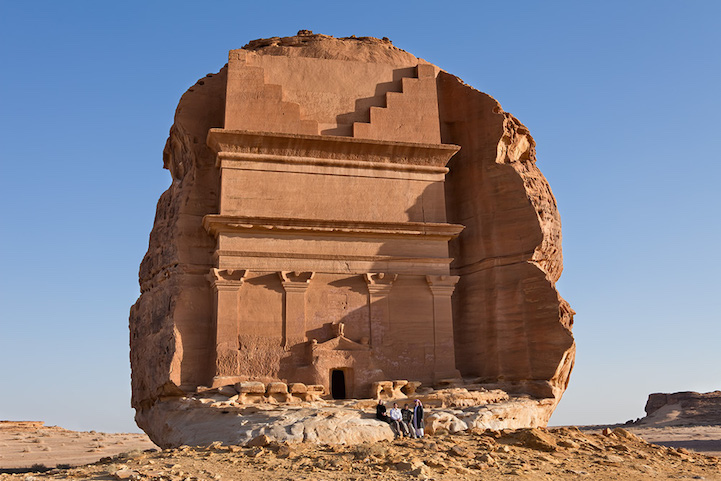 Photo via saudi-archaeology
Photo via saudi-archaeology
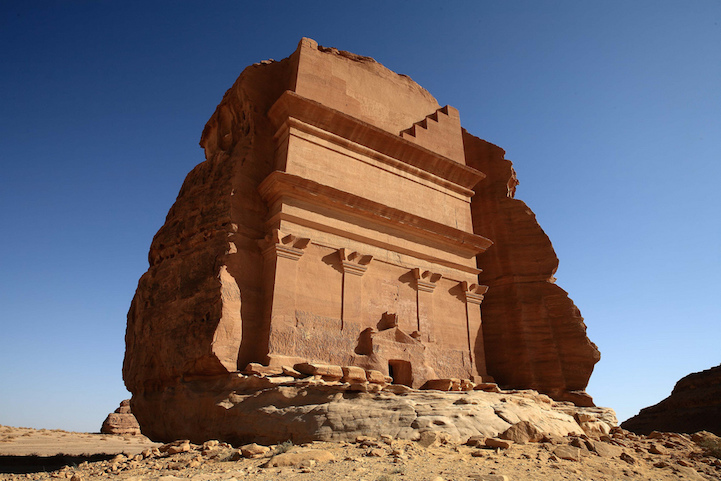 Photo credit: Andrew Ian Salegumba
Photo credit: Andrew Ian Salegumba
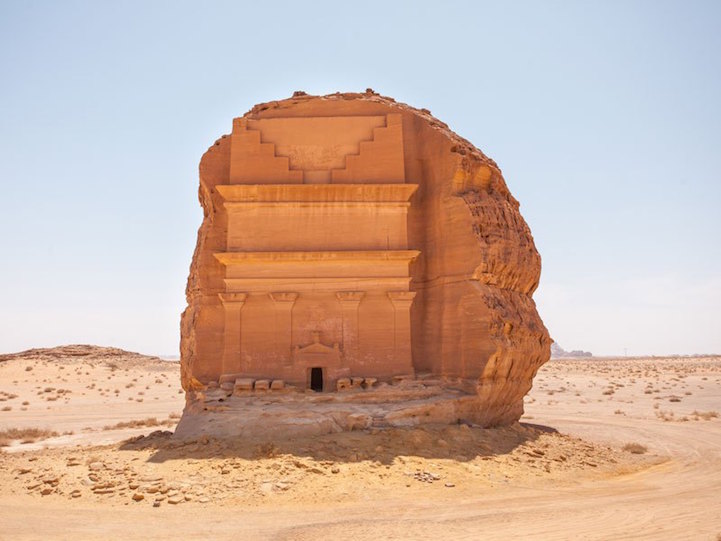 Photo credit: Tomasz Trzesniowski
Photo credit: Tomasz Trzesniowski
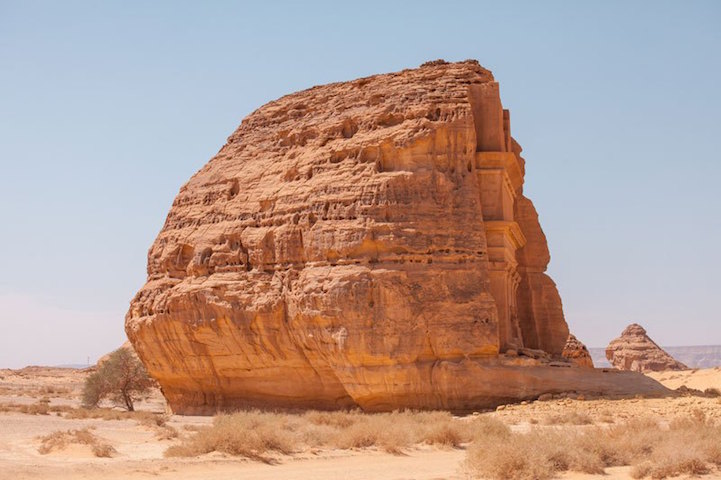 Photo credit: Tomasz Trzesniowski
Photo credit: Tomasz Trzesniowski
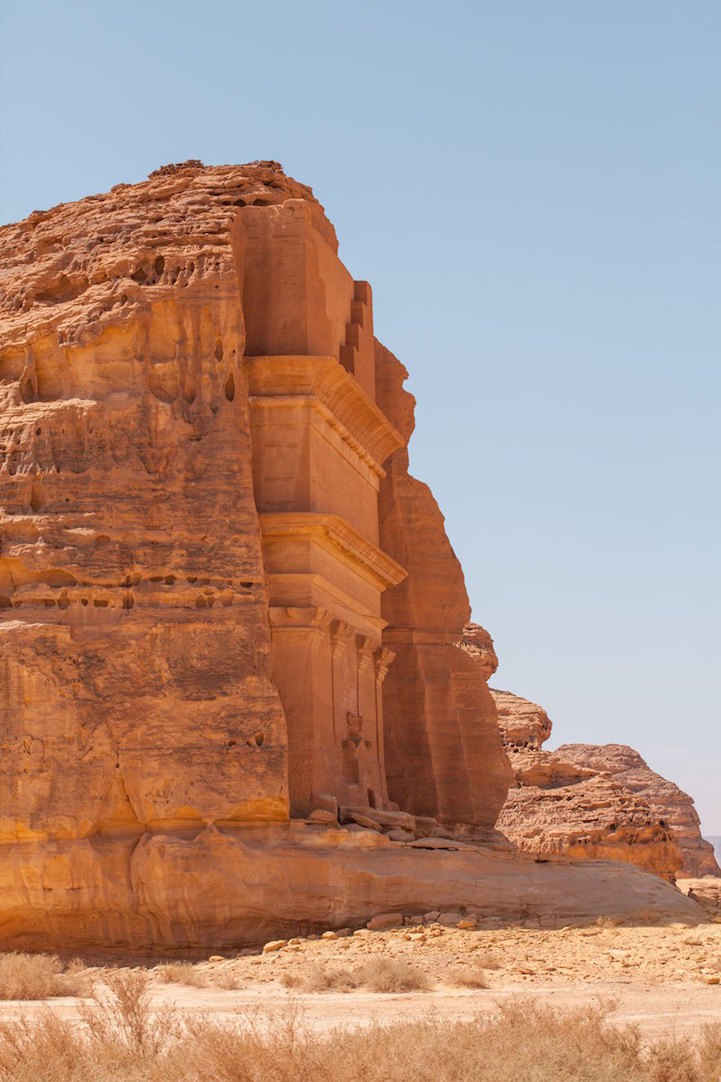 Photo credit: Tomasz Trzesniowski
Photo credit: Tomasz Trzesniowski
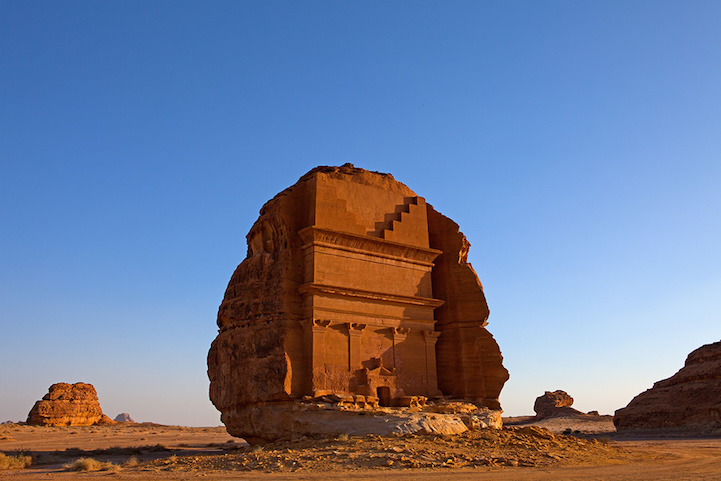 Photo via saudi-archaeology
Photo via saudi-archaeology
via [Twisted Sifter], [Amusing Planet], [Archaeology.org]






















































































